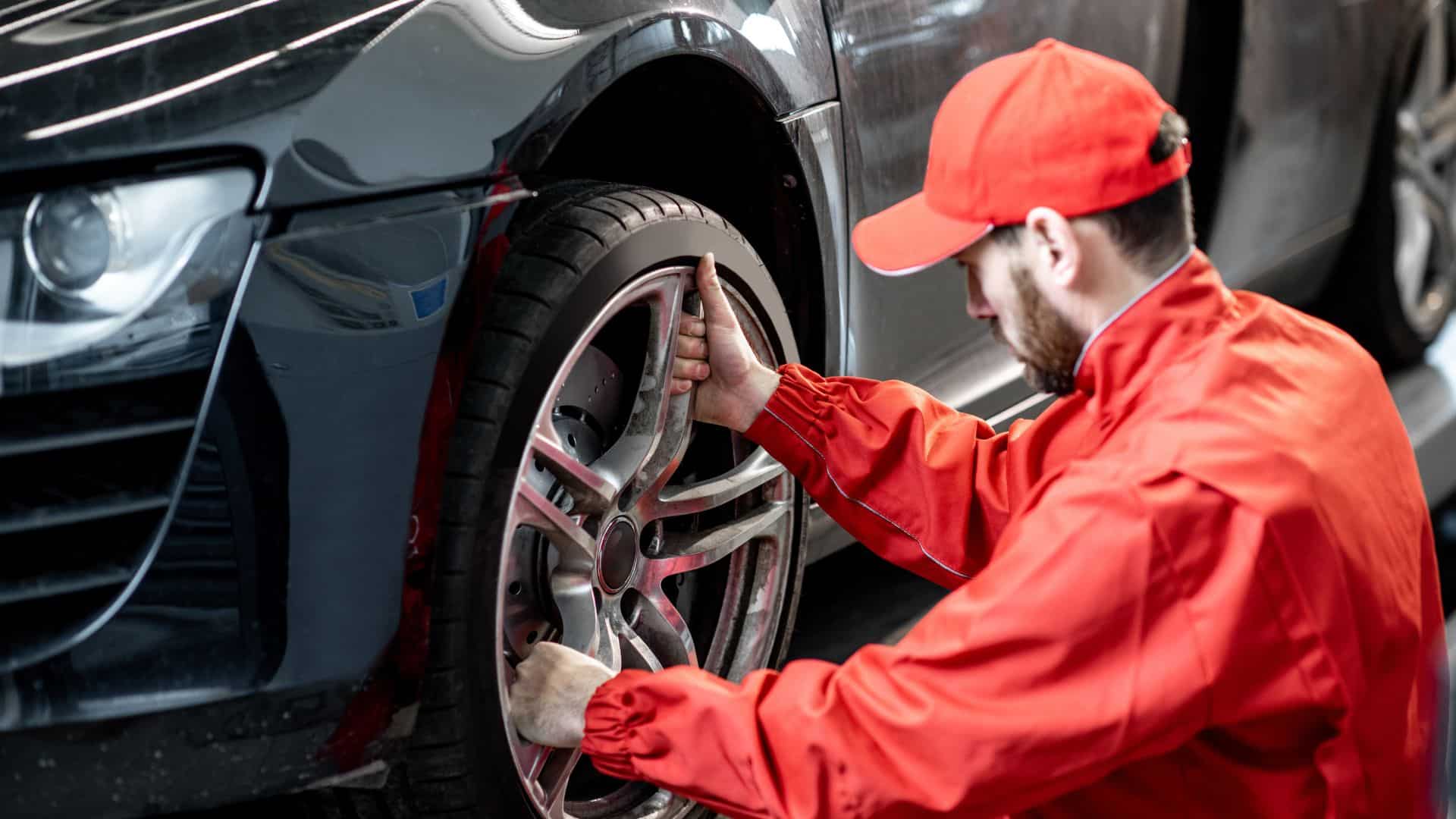Picking the right wheels for your Nissan Altima can be tricky. Many car owners struggle with understanding lug patterns and how they affect wheel compatibility. If you’ve ever felt confused about your Nissan Altima lug pattern, you’re not alone.
This guide promises to clear up any confusion and make wheel selection a breeze. It’ll walk you through everything you need about the Nissan Altima lug pattern, from basic definitions to practical applications.
You’ll learn how to identify your car’s specific pattern, understand its importance, and use this knowledge to make informed decisions when upgrading or replacing your wheels.
Generations of Nissan Altima: How the Lug Pattern Has Evolved

Over the years, the Nissan Altima has seen various changes and improvements. However, one aspect that has remained remarkably consistent is its lug pattern.
This is good news for Altima owners, as it simplifies wheel selection and ensures compatibility across different model years.
Generational Evolution of Lug Patterns
From its early models to the latest versions, the Nissan Altima has maintained an invariant lug pattern of 5×114.3 mm (or 5×4.5 inches). This is relatively unusual in the automotive world, where specifications often change with new model generations. For Altima owners, this comes as a big advantage.
This unique lug pattern offers Altima owners more flexibility when choosing wheels. Whether you’re looking at newer or older Altima wheels, chances are they’ll fit your model. This also means you can keep your favorite wheels when upgrading to a newer Altima model, saving you money and hassle.
Notable Exceptions or Changes
While the lugs of an Altima have been relatively indifferent, it’s worth noting that other wheel specifications, such as size and offset, may have changed over the years. Always check these details when selecting new wheels for your Altima.
| Year Range | Lug Pattern | Notes |
|---|---|---|
| 1993-1997 | 5×114.3 mm | First generation |
| 1998-2001 | 5×114.3 mm | Second generation |
| 2002-2006 | 5×114.3 mm | Third generation |
| 2007-2012 | 5×114.3 mm | Fourth generation |
| 2013-2018 | 5×114.3 mm | Fifth generation |
| 2019-2024 | 5×114.3 mm | Sixth generation |
Understanding the Nissan Altima Lug Pattern: Key Details for Owners
1. Why Your Nissan Altima’s Lug Pattern Matters
The lug pattern of your Nissan Altima is more than just a technical detail – it’s a key factor in your car’s safety and performance.
This pattern, which refers to the number and arrangement of lug nuts on your wheel, directly impacts how securely the wheel attaches to your Altima.
Getting right ensures your wheels fit properly, keeping you safe on the road and maintaining your car’s handling characteristics.
2. Keeping You Safe: The Link Between Lug Patterns and Stability
Using wheels with the wrong lug pattern for your Nissan Altima can lead to serious safety issues. Improper wheel attachment can cause vibrations, making your ride uncomfortable and potentially dangerous.
In extreme cases, it could even lead to wheel detachment while driving. To prioritize your vehicle’s safety and stability, ensure your wheels have the correct Nissan Altima lug pattern.
3. Smooth Rides and Even Wear: Lug Patterns’ Role in Alignment
The correct Nissan Altima lug pattern does more than keep your wheels on—it ensures they’re properly aligned. This alignment is crucial for smooth handling and even tire wear.
You’ll notice improved steering response and longer-lasting tires when your wheels are correctly fitted using the right lug pattern. It’s a simple way to enhance your driving experience and save money on premature tire replacements.
4. How Lug Patterns Affect Your Altima’s Performance
An incorrect lug pattern can have far-reaching effects on your Nissan Altima’s performance. It can lead to uneven tire wear, reducing your tires’ lifespan and grip on the road. You might also notice decreased fuel efficiency as your car works harder to overcome the imbalance.
Even your braking performance can suffer, potentially increasing stopping distances. By using the correct Nissan Altima lug pattern, you’re ensuring optimal performance across these key areas.
5. Tips for a Successful Lug Pattern
Always verify that the lug pattern matches your Nissan Altima’s specifications when shopping for new wheels. You can find this information in your owner’s manual or consult a Nissan dealer.
If you’re unsure, don’t hesitate to ask a professional. They can help you find wheels that look great and fit perfectly. Remember, it’s always better to be safe than sorry about your Altima’s lug pattern.
How to Measure and Verify Your Lug Pattern
Knowing how to measure and verify your Nissan Altima’s lug pattern is valuable for any car owner. It’s not just about getting the right look – it’s about ensuring your wheels fit safely and securely.
Importance of Accuracy: Measuring your lug pattern correctly is crucial. Even a small error can lead to improper wheel fitment, potentially causing safety hazards or expensive repairs. When it comes to your Altima’s wheels, precision isn’t just preferred – it’s necessary.
Common Mistakes: People often make mistakes when measuring lug patterns. Some miscalculate by counting the lugs incorrectly or measuring the wrong distance. Remember, you’re looking at a 5-lug configuration for the Nissan Altima lug pattern with a specific measurement between lugs.
Step-By-Step Guide Measuring Process
Follow these steps to measure your Nissan Altima’s lug pattern accurately:
1. Identify the Number of Lugs: Count the lug nuts on your wheel hub. Most Nissan Altimas have five lugs.
2. Measure the Distance: For a 5-lug pattern like the Altima’s, measure from the center of one lug to the outer edge of the lug directly across from it. This gives you the bolt circle diameter.
3. Verify the Measurement: Compare your measurement to the standard Nissan Altima lug pattern: 5×114.3 mm or 5×4.5 inches. Your measurement should be close to these figures.
4. Recheck for Accuracy: Measuring a second time is always wise, especially if this is your first time checking a lug pattern. This extra step can save you from costly mistakes.
Tools Needed for Measurement

To measure your Nissan Altima lug pattern accurately, you’ll need the following tools:
Caliper: This is the most precise tool for measuring the lug-to-lug distance. Place the caliper’s jaws at the correct points and read the measurement carefully.
Ruler/Measuring Tape: A ruler or measuring tape can work if you don’t have a caliper. Be extra careful to keep it straight when measuring.
Marker: Use this to mark the center of the lugs. It can make it easier to measure accurately, especially when using a ruler or tape measure.
Remember, accuracy is key to your Nissan Altima lug pattern. Taking the time to measure correctly can save you from headaches. If you’re ever unsure, don’t hesitate to consult with a professional. They can verify your measurements and ensure you’re on the right track for safe and proper wheel fitment.
Lug Nut Specifications for Nissan Altima
The lug nuts on your Nissan Altima’s wheels play a crucial role. Using the right size and applying the correct torque isn’t just about following rules—it’s about ensuring your safety and your car’s performance.
1. Lug Nut Size
Most Nissan Altima models have a lug nut size of M12 x 1.25. This might seem like a small detail, but it’s incredibly important. Using the wrong size can damage your wheel studs or compromise how securely your wheel attaches to your car. Always double-check this specification for your specific Altima model year to ensure you use the correct size.
2. Torque Requirements
The recommended torque for Nissan Altima lug nuts is typically around 83 ft-lbs. This specific amount of force is crucial for proper wheel attachment. Too loose, and your wheels could come off while driving. Too tight, and you risk damaging the wheel studs or making it difficult to remove the wheel when needed.
Importance of Proper Torque
Applying the correct torque to your Altima’s lug nuts is more than just following a number – it’s about your safety on the road. Improperly torqued lug nuts can lead to several issues:
- Loose wheels, which can cause accidents
- Uneven tire wear, reducing your tires’ lifespan
- Damage to wheel studs, leading to costly repairs
By taking the time to torque your lug nuts correctly, you’re investing in your safety and your car’s longevity.
3. Retorquing: When and Why

Retorquing your lug nuts is an often overlooked but important maintenance task. Here’s what you need to know:
Timing: The best time to retrieve your lug nuts is after the first 50-100 miles following a wheel installation or tire rotation. This allows for any initial settling of the wheel.
Why Retorque: Driving vibrations and temperature changes can cause lug nuts to loosen over time. Retorquing ensures they remain at the correct tightness, maintaining the secure attachment of your wheels.
Step-by-Step Retorquing Process
Loosen and Retighten: Using a torque wrench, slightly loosen each lug nut and then retighten to the specified torque (remember, about 83 ft-lbs for most Altimas).
Cross-Pattern Tightening: Always tighten your lug nuts in a star or cross pattern. This ensures even pressure distribution on the wheel, preventing warping or uneven wear.
Check After Driving: It’s a good idea to check the torque again after retorquing and driving a few miles. This is especially important if you’ve just installed new wheels or reattached existing ones.
Common Misconceptions About Lug Patterns of Nissan Altima
Misconceptions about the Nissan Altima lug pattern can lead to confusion and potentially costly mistakes. Let’s clear up some of these common misunderstandings.
Interchangeability Myths
One of the most prevalent myths is that all wheels from Nissan vehicles will fit an Altima. While it’s true that many Nissan models share the same 5×114.3mm lug pattern as the Altima, this doesn’t guarantee a perfect fit. Other factors like wheel offset, center bore size, and overall wheel dimensions also play crucial roles in proper fitment.
Another common misconception is that wheels from other car brands with a 5×114.3mm lug pattern will automatically fit a Nissan Altima. While the lug pattern might match, differences in offset, center bore, and load ratings can make these wheels unsuitable or even dangerous.
Conclusion
Understanding the Nissan Altima lug pattern is more than just a technical detail – it’s a key to safety and performance. This guide has explored how this seemingly small aspect impacts wheel fitment, stability, and overall vehicle dynamics.
The Altima’s consistent 5×114.3mm pattern across generations offers flexibility, but it’s crucial to always double-check measurements and specifications. Knowing the lug pattern is essential whether replacing wheels, rotating tires, or simply learning about car mechanics.
Looking at an Altima’s wheels, one sees more than just metal and rubber—it’s a carefully engineered system ensuring road safety. This knowledge empowers Altima owners to make informed decisions about their vehicle’s wheels and maintenance.


